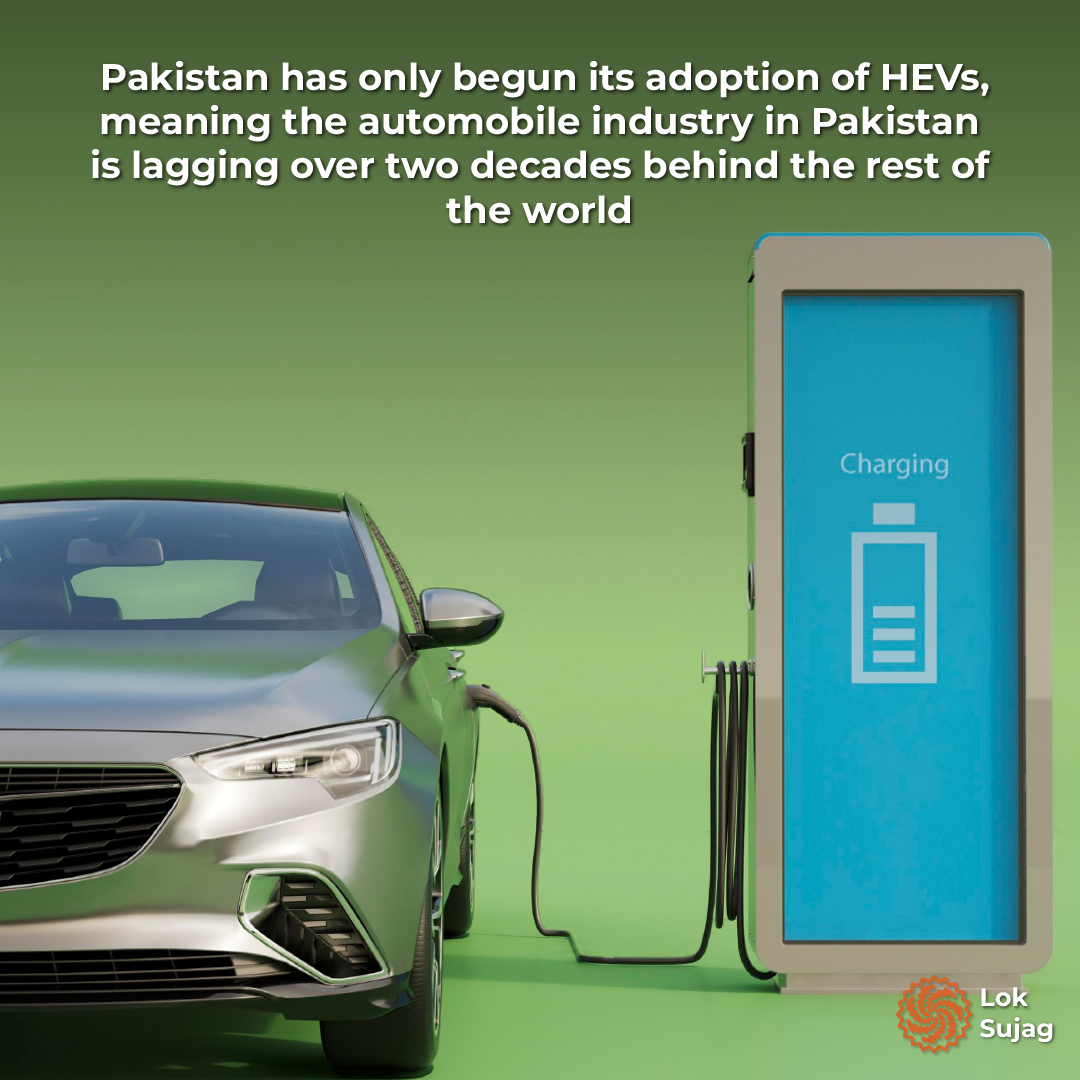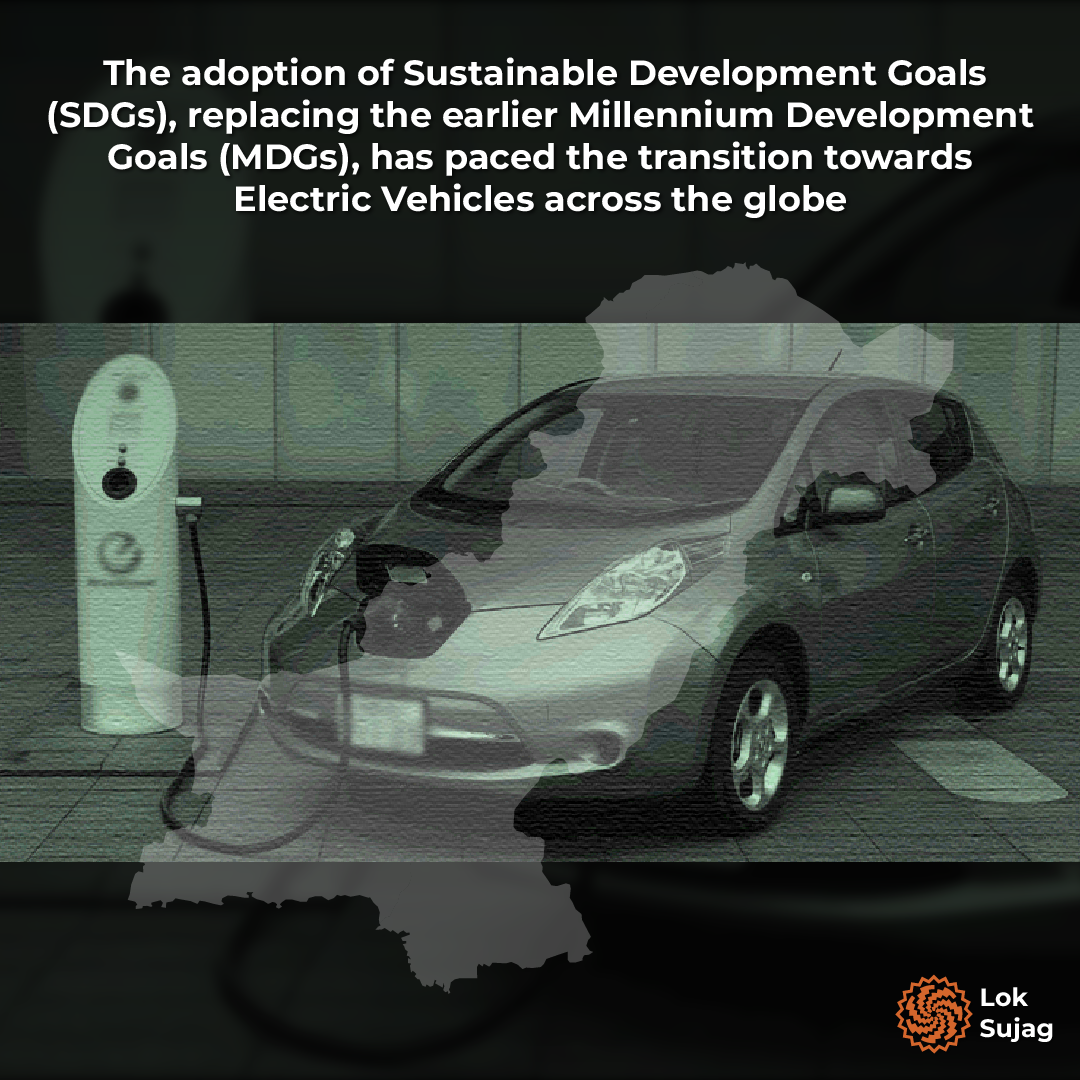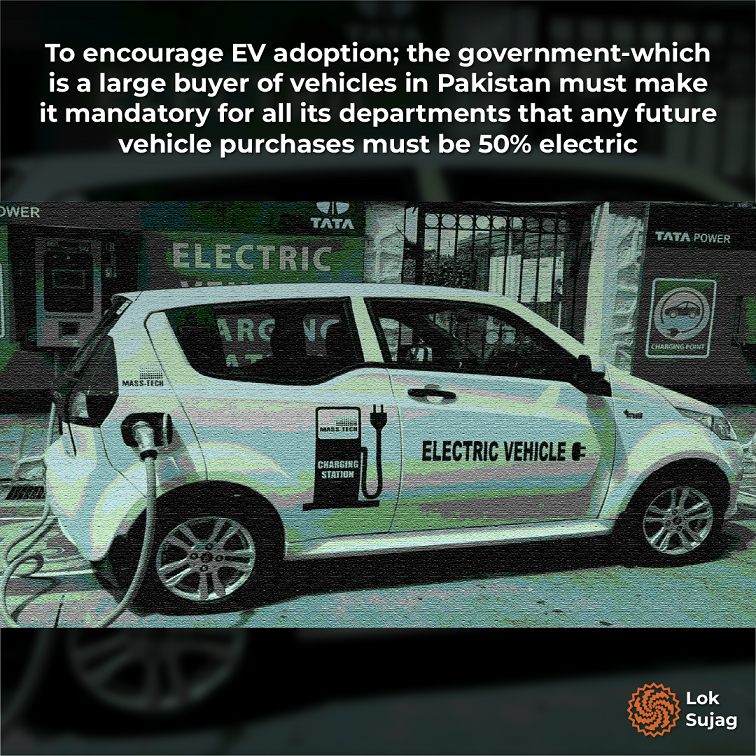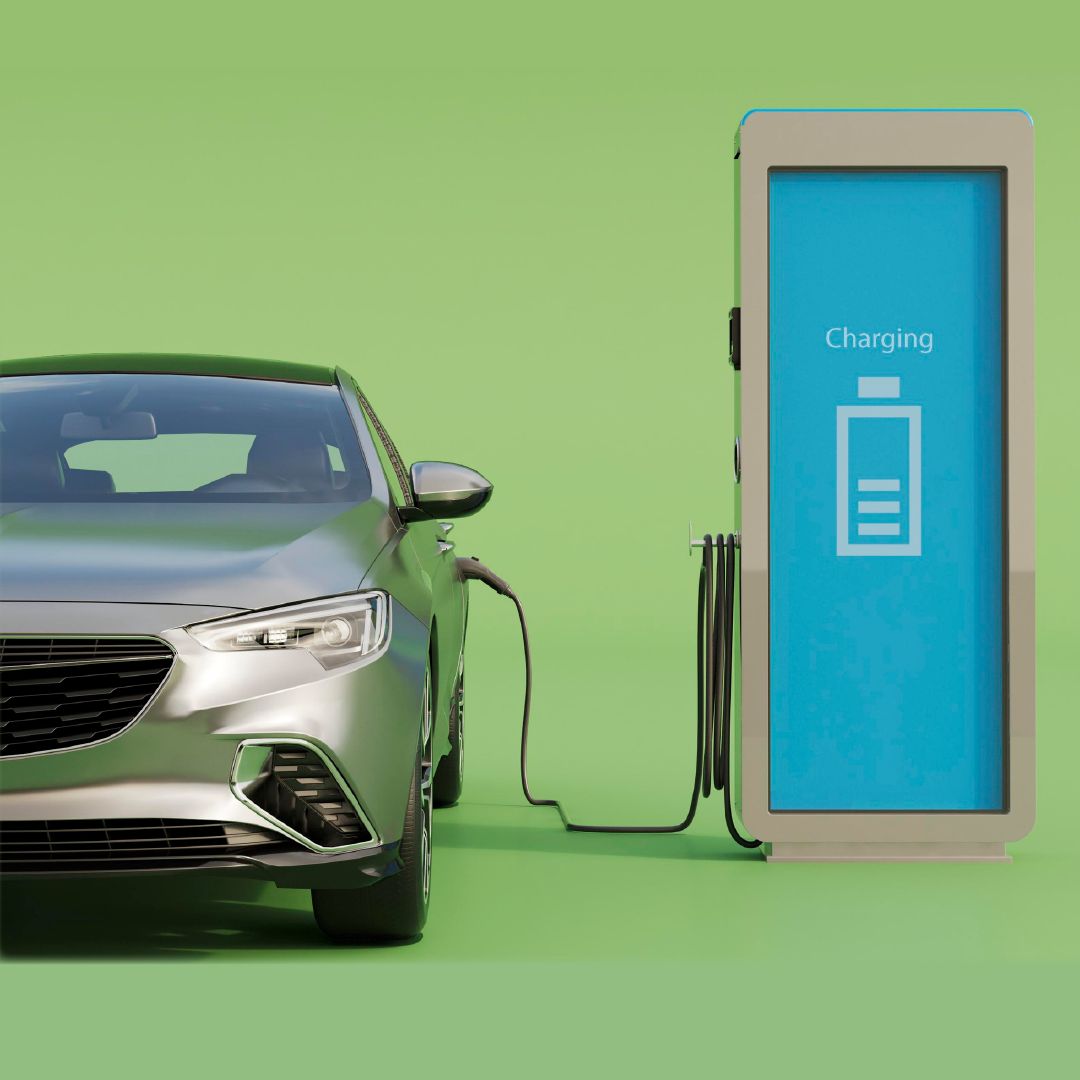The fiscal year 2023-24 saw a breath of fresh air blown into the automobile industry as multiple Hybrid Electric Vehicles (HEVs) have been introduced to the Pakistan market by multiple companies, while rest are expected to follow suit over the next year or two. The first Hybrid Electric Vehicle globally was rolled out in 1997 and since then have been captured a significant share of automobile sales all across the world.
On the contrary, the Pakistan has only begun its adoption of HEVs, meaning the automobile industry in Pakistan is lagging over two decades behind the rest of the world. Resultantly, car ownership remains significantly low in Pakistan with only six percent households owning at least one four-wheel vehicle.
Similarly, while Electric Vehicles have been present singe long before, the Battery Powered Electric Vehicles (BEVs or commonly referred to as EVs), were first mass produced for sales to general public in 1996 and the global automobile industry has since then not looked back.
The adoption of Sustainable Development Goals (SDGs), replacing the earlier Millennium Development Goals (MDGs), has further paced the transition towards Electric Vehicles across the globe. Reason being, transition towards EVs is considered as an important catalyst for achieving the targets set out under multiple SDGs. Mass adoption and transition to EVs from Internal Combustion Engine Vehicles (ICEVs) is expected to directly benefit in achieving the SDGs 7(Affordable and clean energy) , 9(Industry, innovation and infrastructure), 11(Sustainable cities and economies), 12(Responsible consumption and production) and 13 (Climate action) while will present an indirect advantage in inching closer to achieving the targets set out under SDGs 3 (Good health and well-being)and 8 (Decent work and economic growth) particularly, among others.
Pakistan being a signatory of the Sustainable Development Goals has also in recent few years began efforts for introducing Electric Vehicles in the country. Pakistan presented its first ever national electric vehicle policy in the year 2019.
The last few years have seen some positive transformations in the country’s automobile industry. Automobile companies operating in Pakistan has increased from just three (Honda, Toyota and Suzuki), commonly referred to as the Big Three due to their hold over the entire automobile market, to over 13. While these new companies have challenged the market share of the Big Three, that too by braving into previously untapped areas of Pakistan automobile industry. Sazgar, in collaboration with Chinese manufacturing companies Great Wall Motors and Haval have introduced multiple HEVs to the Pakistan market, while Hyundai was the first one to present an HEV for sale in the country. Toyota, the creator of hybrid technology for vehicles is the only one among the Big Three to offer any HEV in Pakistan.

Similarly, multiple companies are now offering EVs for sale in Pakistan, however, none of the Big Three looks interested in tapping into this market which to date remains a competition among the new entrants. Unfortunately for Pakistan, it is again over two decades behind the rest of the world in initiating its efforts towards transitioning to Electric Vehicles. However, now that automobile companies in Pakistan have finally joined the HEV and EV train, achieving targets under the SDGs is not the only or even the primary motivation for Pakistan transition into electrification of vehicles. Instead, it has many macroeconomic and environmental benefits attached as well.
In fact, Changan, which is preparing to launch two Electric Vehicles in Pakistan in coming months, promises the shift from ICEVs to EVs as a shift not just about an economically or environmentally sound decision, but a shift to a completely different and better experience as a car user. Master Changan Motors Ltd.’s vision behind the shift to EV reads as “You have to have a better car. It’s not just the ideological decision of buying an EV. It’s about buying a better car.”
The Global Climate Risk Index puts Pakistan as the 5th most vulnerable country to the disastrous impacts of climate change. If necessary steps are not timely taken, reversing the potential damage to environment will become harder as time goes on. The persistent smog during winters is one of the impacts of continuously increasing pollution in the country, particularly Punjab region. The Urban Unit, Government of Punjab, has estimated that over two-thirds of the pollutants in Lahore’s air come from the transport sector. The situation surely will not differ much in other cities as well. A shift towards the Electric Vehicles will help Pakistan reduce its emissions from the transport sector, and while it will not all by itself clean the country’s air, but will prove to be a major step in the right direction.
Dr. Usman Qadir, Senior Research Economist at Pakistan Institute of Development Economics expressed that “ICEVs pose an environmental challenge with their emissions and an economic challenge due to increased fuel demand and a higher import bill for Pakistan.
A shift to EVs will, even if not entirely, help us improve our situation on both fronts substantially. That being said, shifting to EVs is not an overnight possibility. It requires a complete ecosystem to facilitate the use of EVs, and a behavioral change in consumers thinking to adapt to the requirements of an EV. From planning a trip to making a habit of charging the vehicle before time.

Pakistan's automobile industry lags well behind the world, but it is not only the need of the times, but the need of the country as well that consumers have the option to choose from ICEV, HEV or EV whichever they deem fit for their use.
So, for Pakistan's present, and most importantly future, we must not resist the introduction of EVs. Instead, we must focus on developing the ecosystem that helps make use of EVs easier for consumers. Without this, large scale EV adoption will not be possible.”
Moreover, Pakistan’s economic woes are not hidden from anyone. In fact, being on brink of default is a cyclical event for Pakistan that has taken the country to IMF’s doorsteps 23 times in its 75 years of history.
Pakistan is a regular appearance in the IMF emergency ward, much like a patient that refuses to look after its health when discharged from the hospital hence ending up back there rather frequently. Primary cause for the repetitive currency crises in the country is its large trade deficit, hence the inability to finance its imports.
Oil imports are a major burden on Pakistan’s import bill. The OCAC’s annual Oil report shows that approximately three fourths of the oil imports of the country are for the transport sector.
On average, as the figure above shows the oil imports equal approximately 30 to 40 percent of the country’s yearly trade deficit. Now in a scenario where we are able to replace enough ICEVs with EVs to half the oil imports for road transport, we would be able to decrease the trade deficit by approximately 15 to 20 percent, improving the available fiscal space to the government.
There are great deals of question regarding the adoption of EVs from a consumer perspective as well in Pakistan. While these worries are not baseless, mainly due to the challenges an individual currently faces for shifting to EVs.
However, none of these challenges merit taking away the right of decision from the consumer and deciding on their behalf. Instead, the focus of the government must remain on providing consumers the choice to make the decision they find most suitable for them: to buy ICEV, HEV or EV for their mobility.
Transitioning to EVs makes great deal of sense from an environmental and macroeconomic perspective for a country like Pakistan, and if they seem a viable option to the consumer as well then the shift might occur much sooner than we expect.

If they do not, then it will not take long for the industry to phase out these EVs from the market as well. Therefore, the focus from a policy perspective must be on creating a facilitative environment and a level playing field for all stakeholders, and let them compete for their existence among themselves.
The market will work only when it is allowed to work, and the Electric Vehicles are without doubt a positive externality for competition in Pakistan’s automobile industry.
The government has introduced some incentives to encourage EV penetration in Pakistan, most notably, concessionary custom duties on import of Completely Built Units (CBU) of EVs. It has helped bring down the upfront cost of Electric Vehicles in Pakistan to a degree, but still they remain financially and practically unviable for the wider audience.
The government though can influence the demand for EVs through policy interventions, especially by learning from the global examples. First and foremost, tax breaks and incentives to businesses installing commercial chargers must be considered which has been practiced by all countries with significant EV adoption.
This will help make the commercial charging business more profitable and help ease up the public’s range anxiety, thus act as a catalyst for transitioning to EVs.
Like the United States, tax credits or rebates to EV buyers can be introduced in Pakistan as well, while concessions in toll taxes, reduced sales tax and VAT on EV and minimizing the registration fee of EVs will go a long way in encouraging buyers to shift to EVs.
It is important to realize that a single policy alone will have no major impact, instead a multi-layered approach is necessary to push all stakeholders in the same direction.
Moreover, to encourage EV adoption; the government-which is a large buyer of vehicles in Pakistan-, must make it mandatory for all its departments that any future vehicle purchases must be 50% electric and procured locally. This will not only help the local automobile industry trying to introduce EVs in Pakistan, but also give confidence to the general public for transitioning to EVs.
Also Read

Growth Potential and Constraints in Pakistan’s Electric Vehicle Market
Mr. Abuzer Butt, Deputy General Manager Marketing at Sazgaar while talking at the Automobile Conference by Pakistan Institute of Development Economics acknowledged that “the upfront cost of EVs, especially in the two and three-wheel segment is a huge barrier towards the transition. Even if companies eliminate their profits from the sale price, the two and especially the three wheelers remain much costlier and unviable for a large segment of society which through various challenges gathers money to buy a petrol bike or rickshaw We are trying to minimize the cost of production while also working with the government to minimize the taxes applicable to make EVs a feasible option for the lower income segment of the society as well, but it continues to be a major challenge currently.”
The transition to EVs has been a challenge even for the developed world, and gets even challenging in a country like Pakistan. Pakistan’s automobile industry lags decades behind the world, and the inconsistency of policies makes things even worse for businesses and consumers alike.
The market, if allowed to function, will resolve its issues and overcome the challenges with time. However, what the market will not be able to withstand is the absence of a long term policy framework.
The EVs are a reality, and whether anyone likes or not, they are here to stay for the foreseeable future globally. Pakistan though needs to make a decision whether we would like to walk with the world or stay decades behind, once again?
Pakistan needs a clear vision and long term policy framework from the government to help the transition to EVs in the country. Unless uncertainty due to lack of action and interest from the government remains on the matter, EV transitioning in Pakistan will remain yet another unrealized slogan. This is the time for Pakistan to decide and set its future direction.
Published on 22 Aug 2024




















